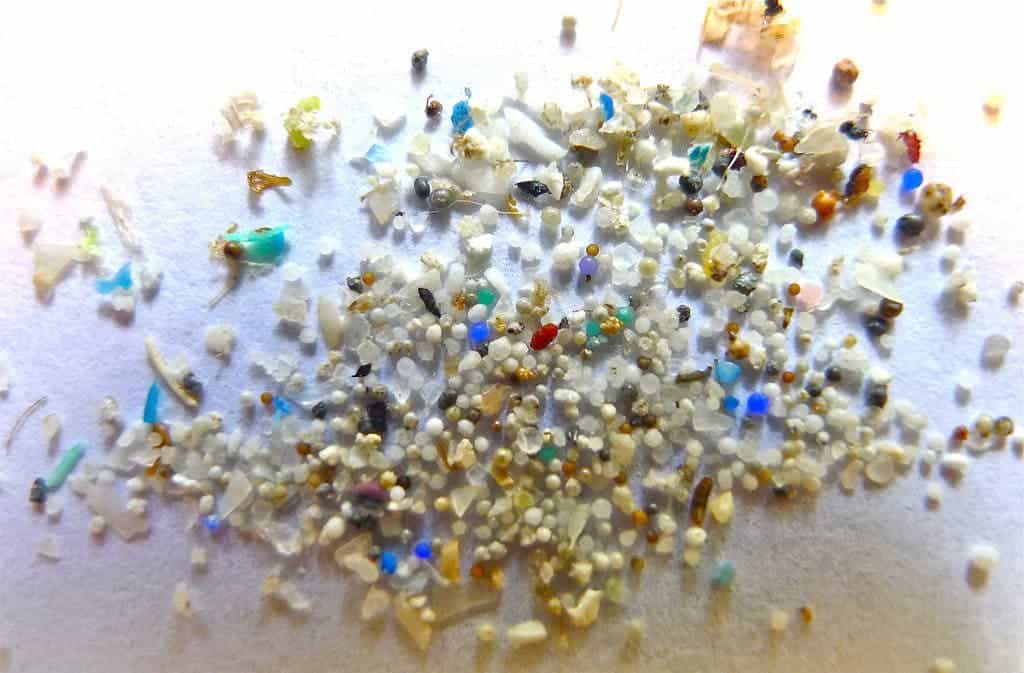The U.S. ban on microbeads (small beads made out of plastic) signed into law by President Barack Obama in 2015 continues into 2017. Over the next few years, manufacturers must cease using these tiny plastic polymers in our everyday products.

Many of us may not realize microbeads are present in common household items such as makeup, shampoos, body/exfoliating washes, even toothpaste. They could also be hiding in fish or in foods seasoned with healthy, natural sea salt.
The ban on microbeads is a positive step toward stopping the flow of these marine life–choking polymers into our waterways. A bright horizon for microbead-free products lies ahead.
What Are Microbeads?
“Microbead” is a loose term that manufacturers use to define several types of plastic polymer beads. Microspheres, microcapsules, or nanospheres better describe the ultra-small plastic particles primarily used in medicine and industry.
These plastic particles contaminate waterways and end up in our oceans, creating microplastic pollution. The majority of microbeads used commercially are made of polyethylene, the same type of plastic used in the manufacture of plastic bags, milk jugs, and water bottles.
These tiny beads (most often, in the size range of millimeter to micrometer) are added to products to enhance performance, appearance or durability.
What Products Have Microbeads?
Microbeads are found in several products. For example, millimeter-size microbeads in some facial washes provide an improved exfoliating performance. In other words, they help your face get that deep, fresh clean. Microbeads also give exfoliating face and body washes their gritty texture. The majority of consumer products with microbeads are face washes, cleansers, and scrubs.
Another notable example of microbeads are the colorful specks in toothpaste. However, some manufacturers chose to remove microbeads from their products due to consumer pressure.
While these microbeads are considered safe for us to use, their disposal down drains and their eventual journey into aquatic habitats adds more pollution to our oceans.
Our Oceans Are Looking Bad
There’s a lot of plastic floating around in our oceans. We even give names to these island-size plastic gyres such as one popular example, the great “Pacific Garbage Patch.” These masses of floating plastic pollution include both large items such as plastic garbage bags and small microplastics that we can’t see without the help of a microscope.
Much of this floating plastic garbage is comprised of polyethylene. While we formerly considered this plastic safe, studies from some time ago discovered that microplastics floating in the ocean soak up toxins from the water.
Are We Eating Microbeads?
It’s possible that we’re consuming food with microbeads. It’s a straightforward path. If our fish eat microbeads and we eat fish, we’ve been exposed to microbeads and whatever toxins they’ve absorbed.
And what about other products harvested from the oceans? Research has shown microplastic pollution floats freely in open ocean water.

Even if you don’t eat fish, you may have vegetables in your kitchen pantry that contains natural sea salt. Natural sea salt is considered a healthier condiment than regular salt, which can be bad for human health.
But I wonder: Where and how do manufacturers get their natural sea salt? If my natural sea salt was obtained by the evaporation of seawater, microplastic and any potential toxins it soaked up could be present in my food.
Will We See ‘Microbead-Free’ Food Labels in the Future?
It is unclear where manufacturers obtain natural sea salt, but we can assume that food grade quality products exclude any known substances or particles harmful to humans. But the key emphasis is on “known.”
Manufacturers cater to consumer demands. Historically, companies have made adjustments to suit consumer preferences by creating foods that are low–fat, fat-free, low(er) salt, gluten-free, GMO-free, sugar-free, no caffeine, all natural and no artificial ingredients.
This list will lengthen as consumer trends and demands change. If microbeads or any type-size of microplastic pollution is found in natural sea salt, an opportunity for “Microbead-Free” labeling exists.
This is a guest post by Dr. Christy A. Rothermund-Franklin, an associate professor for the School of STEM at American Public University. She earned her B.S. in Biotechnology from the University of Nebraska and a Ph.D. in Biochemistry and Molecular Biology from the University Nebraska Medical Center.


